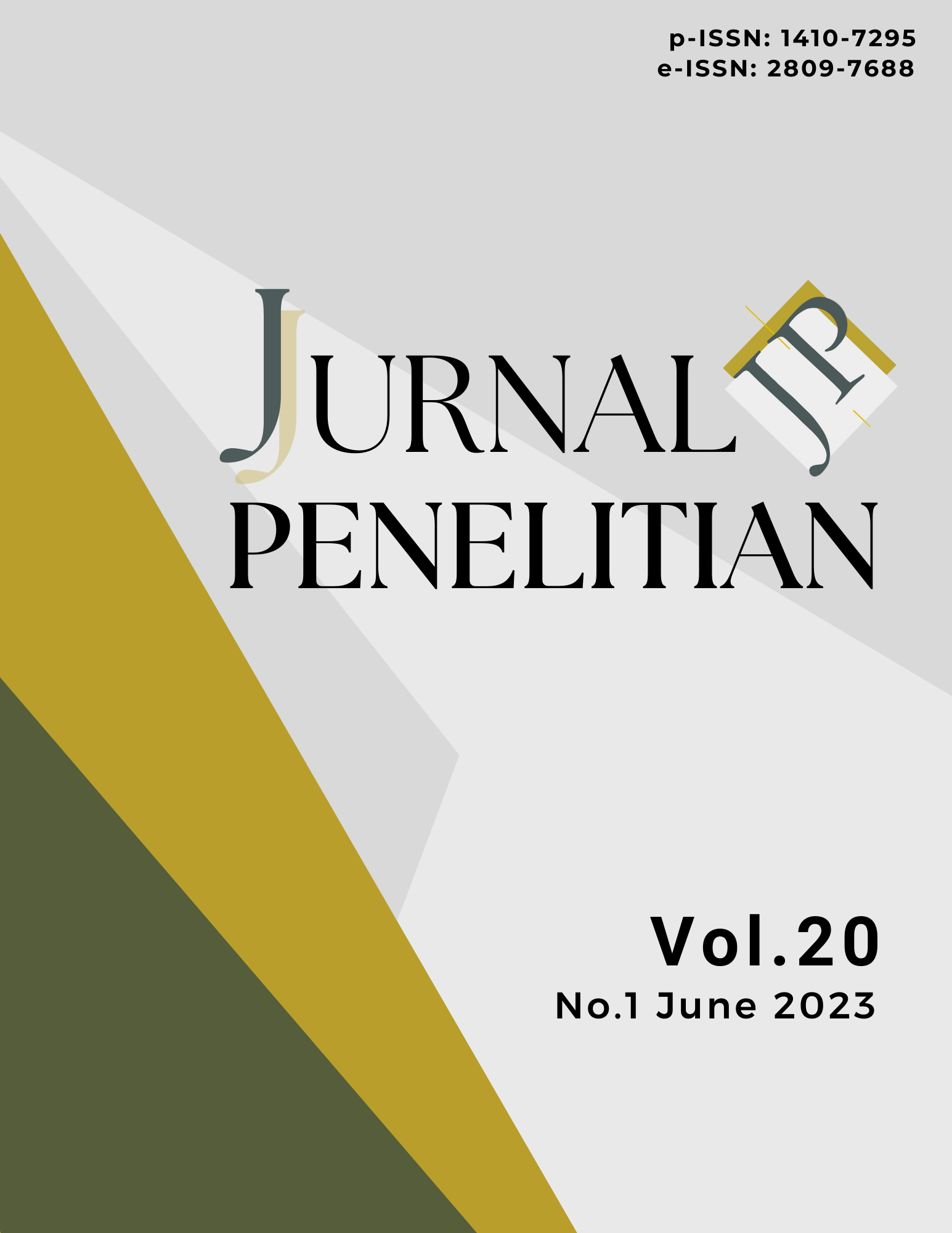How does management commitment to safety and employee satisfaction impact safety performance in cleaning workers?
DOI:
https://doi.org/10.26905/jp.v20i1.11099Keywords:
Employee satisfaction, Management commitment to safety, Safety performanceAbstract
Management commitment to safety, which reflects managers' dedication to the physical well-being of workers, is a critical component of the safety climate. It serves as the primary indicator of worker safety behavior and plays a crucial role in reducing injuries across diverse job roles. This study aims to investigate the relationship between safety-committed management and employee satisfaction and how this relationship influences safety performance among cleaning staff at PT WIS Malang. We employed purposive sampling to select 113 respondents who completed online questionnaires. Data collected were analyzed descriptively and using inferential statistical analysis. The results of this study underscore the importance of enhancing the role of management in promoting workplace safety and improving employee job satisfaction. We found that management commitment to safety and employee satisfaction have a positive impact on safety performance These findings hold significant practical implications for companies like PT WIS Malang, aiding in the cultivation of a strong safety culture within the organization.
Downloads
References
Bayram, M. (2019). Safety training and competence, employee participation and involvement, employee satisfaction, and safety performance: an empirical study on occupational health and safety management system implementing manufacturing firms. Alphanumeric Journal, 7(2), 301–318. https://doi.org/10.17093/alphanumeric.555154
Berhan, E. (2020). Management commitment and its impact on occupational health and safety improvement: a case of iron, steel and metal manufacturing industries. International Journal of Workplace Health Management, 13(4), 427–444. https://doi.org/10.1108/IJWHM-01-2019-0005
Feng, Y. (2013). Effect of safety investments on safety performance of building projects. Safety Science, 59, 28–45. https://doi.org/10.1016/j.ssci.2013.04.004
Ghozali, I. (2013). Aplikasi analisis multivariate dengan Program IBM SPSS 21 Update PLS Regresi (Edisi 7). Badan Penerbitan Universitas Diponegoro.
Hair, J. F., Hult, G. T. M., Ringle, C. M., & Sarstedt, M. (2017). A primer on partial least squares structural equation modeling (PLS-SEM). Second Edition. SAGE Publications.
Jasiulewicz-Kaczmarek, M., Szwedzka, K., & Szczuka, M. (2015). Behaviour based intervention for occupational safety– case study. Procedia Manufacturing, 3(May), 4876–4883. https://doi.org/10.1016/j.promfg.2015.07.615
Kaynak, R., Tuygun Toklu, A., Elci, M., & Tamer Toklu, I. (2016). Effects of occupational health and safety practices on organizational commitment, work alienation, and job performance: using the PLS-SEM Approach. International Journal of Business and Management, 11(5), 146. https://doi.org/10.5539/ijbm.v11n5p146
McGonagle, A. K., Essenmacher, L., Hamblin, L., Luborsky, M., Upfal, M., & Arnetz, J. (2016). Management commitment to safety, teamwork, and hospital worker injuries. Journal of Hospital Administration, 5(6), 46. https://doi.org/10.5430/jha.v5n6p46
Nahrgang, J. D., Morgeson, F. P., & Hofmann, D. A. (2011). Safety at work: a meta-analytic investigation of the link between job demands, job resources, burnout, engagement, and safety outcomes. Journal of Applied Psychology, 96(1), 71–94. https://doi.org/10.1037/a0021484
Öhrling, T. (2014). Increased participation among cleaners as a strategy to improve quality and occupational health. Nordic Journal of Working Life Studies, 4(3), 79–98. https://doi.org/10.19154/njwls.v4i3.4181
Olak, A. J., Hejduk, I., Karwowski, W., Tomczyk, P., Fazlagić, J., Gac, P., Hejduk, H., Sobolewska, S., Çakıt, E., & Alrehaili, O. A. (2021). The relationships between the use of smart mobile technology, safety knowledge and propensity to follow safe practices at work. International Journal of Occupational Safety and Ergonomics, 27(3), 911–920. https://doi.org/10.1080/10803548.2019.1658398
Pinder, J., Gibb, A., Dainty, A., Jones, W., Fray, M., Hartley, R., Cheyne, A., Finneran, A., Glover, J., Haslam, R., Morgan, J., Waterson, P., Gosling, E. Y., Bust, P., & Pink, S. (2016). Occupational safety and health and smaller organisations: research challenges and opportunities. Policy and Practice in Health and Safety, 14(1), 34–49. https://doi.org/10.1080/14773996.2016.1239357
Riduwan, R., & Kuncoro, E. A. (2014). Cara menggunakan dan memaknai Path Analysis (Analisis Jalur). B. Alma ed. CV Alfabeta.
RodrÃguez-Fernández, M., Herrera, J., & de las Heras-Rosas, C. (2021). Model of organizational commitment applied to health management systems. International Journal of Environmental Research and Public Health, 18(9). https://doi.org/10.3390/ijerph18094496
Sarstedt, M., & Cheah, J. H. (2019). Partial least squares structural equation modeling using SmartPLS: a software review. Journal of Marketing Analytics, 7(3), 196–202. https://doi.org/10.1057/s41270-019-00058-3
Sekaran, U., & Bougie, R. (2016). Research methods for business - A skill-building approach. 7th Edition. John Wiley & Sons.
Tanpipat, W., Lim, H. W., & Deng, X. (2021). Implementing remote working policy in corporate offices in Thailand: strategic facility management perspective. In Sustainability (Switzerland), 13(3), 1–23. https://doi.org/10.3390/su13031284
Utami, H. N. (2020). Improving safety behavior in the workplace. 154(AICoBPA 2019), 142–146. https://doi.org/10.2991/aebmr.k.201116.030
Zohar, D., & Luria, G. (2010). Group leaders as gatekeepers: testing safety climate variations across levels of analysis. Applied Psychology, 59(4), 647–673. https://doi.org/10.1111/j.1464-0597.2010.00421.x
Downloads
Published
How to Cite
Issue
Section
License
Authors who publish in this journal agree to the following terms:
- Copyright of the published articles will be transferred to the journal as the publisher of the manuscripts. Therefore, the author confirms that the journal has managed the copyright.
- Publisher of Abdimas: Jurnal Pengabdian Masyarakat Universitas Merdeka Malang is University of Merdeka Malang.
- The copyright follows the Creative Commons Attribution-ShareAlike License (CC BY SA): This license allows to share, copy, and redistribute the material in any medium or format, adapt, remix, transform, and build upon the material, for any purpose, even commercially.


